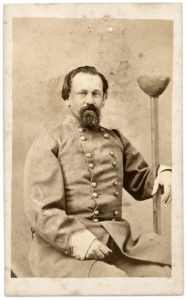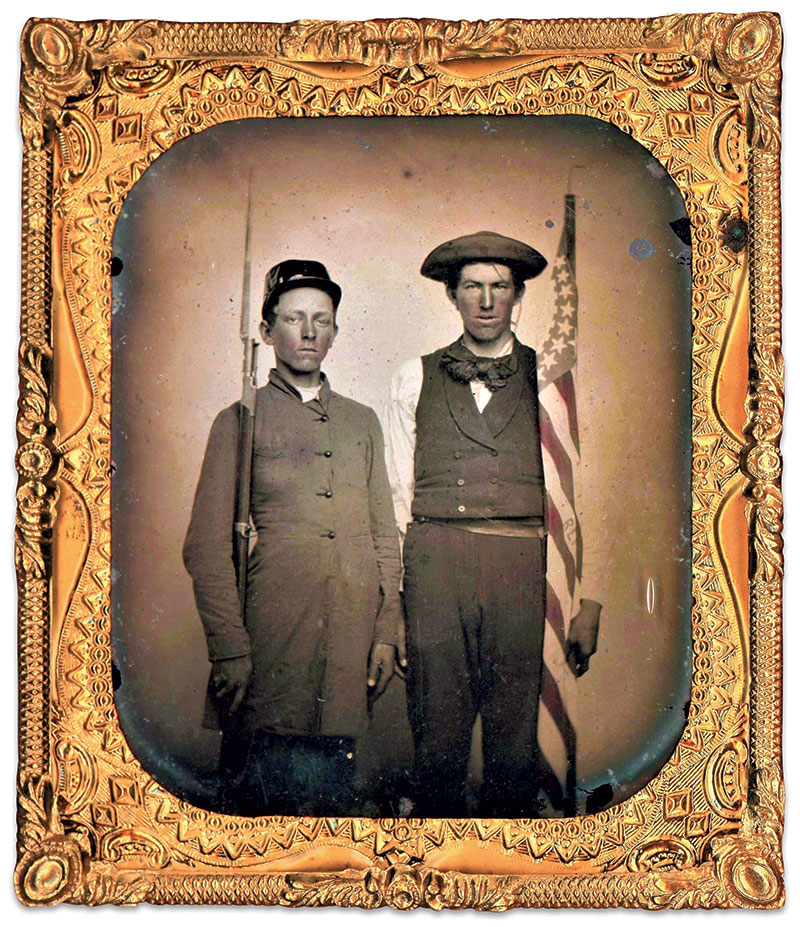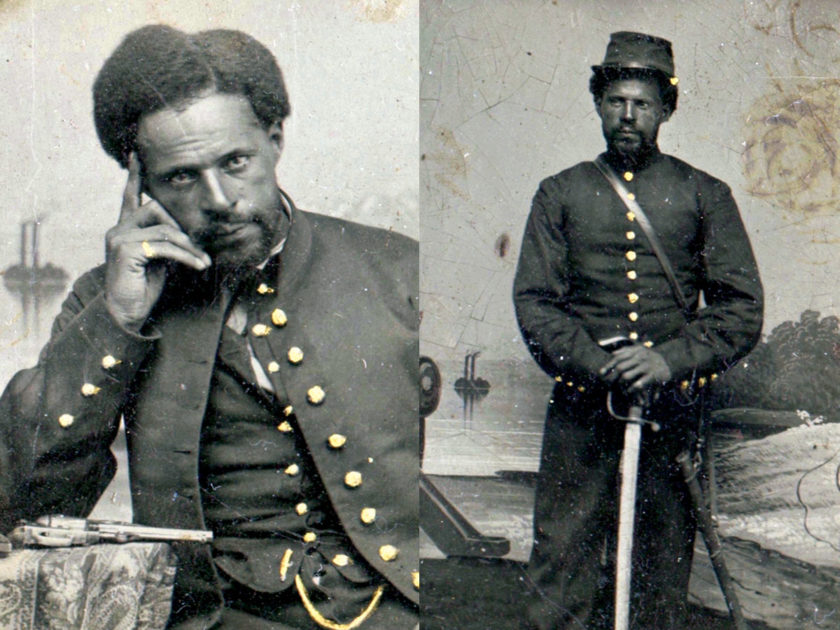July 4, 1864, the 88th anniversary of American independence from Great Britain, marked the end of Confederate Brig. Gen. Alfred Jefferson Vaughan, Jr.’s combat career with the Army of Tennessee. On that day, according to his memoirs, the explosion of an enemy artillery shell cost him a leg as he rested with his men in trenches at Vining Station during the Atlanta Campaign.

Vaughan’s loss deprived the Confederate army of an aggressive, hard-fighting commander. A native Virginian and an 1851 graduate of Virginia Military Institute, he started his military service in Mississippi as captain of The Dixie Rifles, which became Company E of the 13th Tennessee Infantry. He went on to fight in major battles in the Western Theater, including Shiloh, where he suffered a slight wound, and Chickamauga, where he advanced to brigadier and brigade command following the death of his superior officer, Preston Smith.
Vaughan made his post-war home in Memphis, where he posed for this portrait. He became a business and civic leader and was active in the state’s Confederate Veterans’ organization. He told his story in the 1897 book, Personal Record of the Thirteenth Regiment, Tennessee Infantry. He died in 1899 at age 70. More than a century later, in 2013, his great-great-great grandson, Lawrence K. Peterson, provided additional biographical details and context in Confederate Combat Commander: The Remarkable Life of Brigadier General Alfred Jefferson Vaughan, Jr.
William G. Edwards of the 14th Mississippi Infantry displays the stump of his arm for this photo used for official purposes to document his surgery. An inscription on the back of the image mount and additional research reveals Union surgeons amputated the limb on Dec. 1, 1864, the day he gained admission to Hospital No. 1 in Nashville. He had suffered a gunshot to his left elbow two days earlier near Spring Hill, Tenn., in an action leading up to the Battle of Franklin the next day. Edwards fell into enemy hands at Franklin.

A resident of Enterprise, Miss., when the war began, Edwards joined the Enterprise Guards in 1861. It became Company B of the 14th. The following year at Fort Donelson, Tenn., federal forces captured Edwards and sent him to Camp Douglas in Chicago. Formally exchanged in September 1862, he returned to his regiment and advanced to corporal.
His post-amputation recovery was slowed by a 16-day bout with gangrene. He survived, and, following brief stints in the prison camps of Camp Chase, Ohio, and Point Lookout, Md., gained his release in June 1865 after he signed the Oath of Allegiance to the U.S. government.
Edwards returned to Enterprise and served for a time as town postmaster. He died in 1916 at the age 74 and was buried at Enterprise Cemetery.
A soldier strikes two poses—one of contemplation and the other armed for battle. According to Adam Ochs Fleischer, with whom these images currently reside, these tintypes turned up in St. Louis, Mo., almost a half-century ago. The background painting resembles the well-known “Benton Barracks Backdrop” used by St. Louis photographer Enoch Long. But it is a lookalike, perhaps inspired by Long’s background.

The patriotism of the quintessential citizen soldier of the Union army is captured in this portrait of a musket-wielding enlisted man dressed in a 4-button frock coat and cap with rainproof cover and his pard in civilian clothes with the Stars and Stripes.

SPREAD THE WORD: We encourage you to share this story on social media and elsewhere to educate and raise awareness. If you wish to use any image on this page for another purpose, please request permission.
LEARN MORE about Military Images, America’s only magazine dedicated to showcasing, interpreting and preserving Civil War portrait photography.
VISIT OUR STOREto subscribe, renew a subscription, and more.

